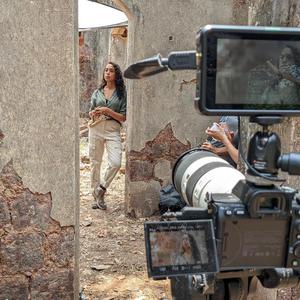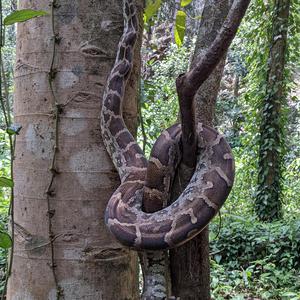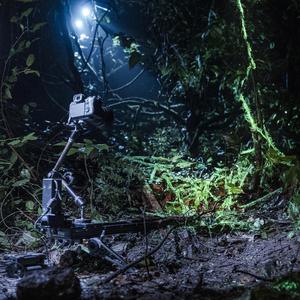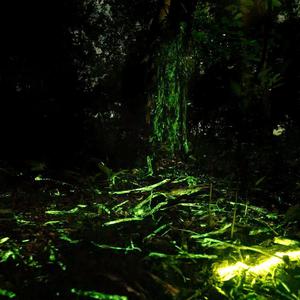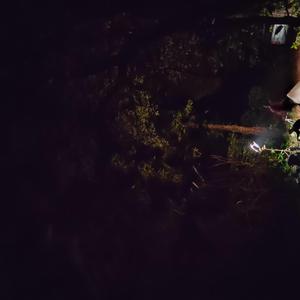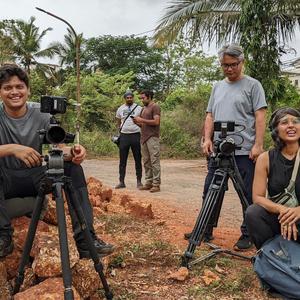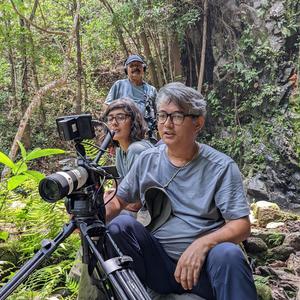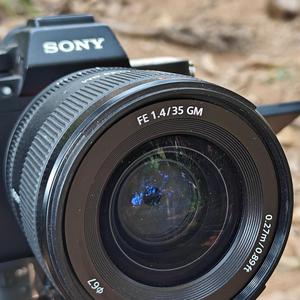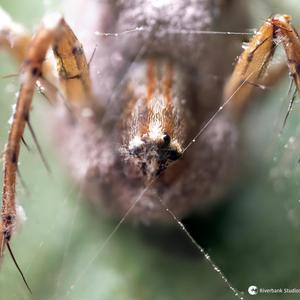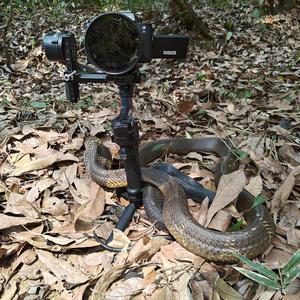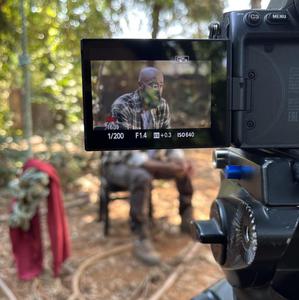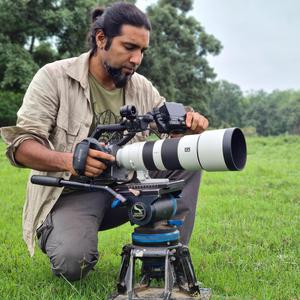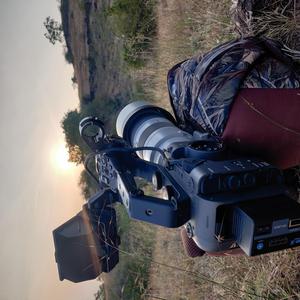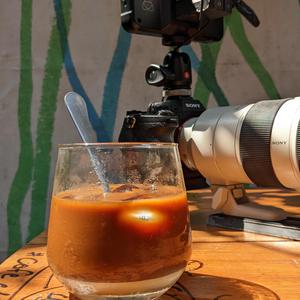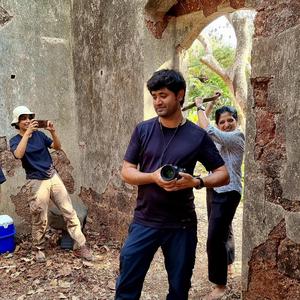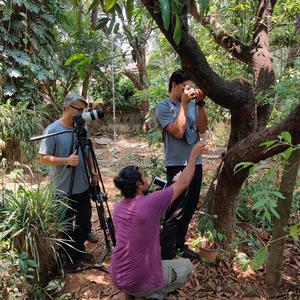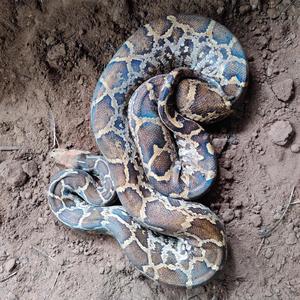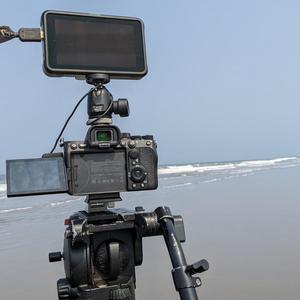

What is Snakes SOS: Goa’s Wildest? Tell us about its back story.
It all began during one of the COVID waves when I and director Doel Trivedy got the brilliant idea to produce Snakes SOS: Goa's Wildest, an entertaining and informative wildlife series.
We created and produced the show for National Geographic, and it is now live streaming on Hotstar. Season 4 has recently been completed in Goa, and the first three seasons are already available to stream. Snakes have had a bad rapport; most people are either terrified or don't like snakes because they are seen as venomous and dangerous. We created this series to raise information about snake species found in India and foster empathy for snakes.
The show features wildlife activists Benhail Antao & Louise Remedios rescue snakes and other wildlife in Goa.
The show has quickly grown in popularity, reaching out to people of every age while establishing a great bond with its younger viewers. The show just won a few international television awards, which is nothing but a terrific encouragement for us to keep up the good work.

What were your favorite moments as a filmmaker on the set?
We’ve filmed for almost 150 days and numerous terabytes of more than 16TB of footage, later, of which we stopped counting.
It’s difficult to pick any single instance but setting up frames and camera positions during the release of a king cobra into the forest was an unforgettable experience. It was quite the sight to see how the 9.5-foot-long world's longest venomous snake glided out of the bag, headed straight, and wrapped itself around the A7S III!
We came across some intriguing scenarios, such as shooting some high frame rate sequences to show how quickly a snake can strike in defence and how each strike does not always result in a bite. We also captured some wild, eye-opening footage by creating a lifelike prosthetic limb and leg.
Another incredible experience, in my opinion, was watching pythons emerge from a clutch of eggs that were rescued. Our team waited for almost 50 days before the pythons started pushing their way out, and then spent 2-3 hours filming them emerge from every angle we could think of.
We had Nitin Kumar and Shanu Babar, the talented DOPs of the series, with us on the sets. Both have been regulars for all three seasons and have enjoyed customizing the camera setup. They also have an incredible experience to share.
What made you choose the Sony FX6
and how did it help you?
We decided to employ the Sony FX6 as our primary camera, which was an obvious choice given its form factor, SLOG, dynamic range, and low-light capabilities. We had two FX6 setups to cover all the action and several smaller cameras for fascinating POV-type images, which we used tenaciously throughout the long days and nights in humid, hot, and dusty conditions.
Filming arboreal snakes, such as the green vine snake, after they had been released on trees posed its own set of difficulties, but the Sony FX6's size, form, and weight made it suitable for handheld shooting or even placing on a gimbal.
The FX6 worked flawlessly for the show thanks to its incredible capabilities, including a built-in ND, and amazing battery life, but as the show went on, our team realized we needed to go leaner and lighter with the setup for the following season. This is when the A7S III came into play.
How well did things go with the A7S III?
With season 2, I and my crew aimed to give the show a raw feel. To do this, we planned to use handheld cameras with the least amount of setup possible, allowing us to experiment with camera angles and move rapidly with the action. Nothing could compete with the A7S III's capability for us because it was the best option for getting rid of all the attachments, including extra monitors, rigs, and external sound inputs.
We found the A7S III's superb autofocus and tap focus to be very useful when snakes were moving towards the camera or the focus required to be on just one person with multiple people in the frame. Since this setup worked so well, we decided to use three camera units for season 2!
What other Sony gear did you utilize for shooting?
With the making of Season 2, we kept expanding our lineup of lenses. We promptly decided to remove the on-camera mics and external monitor in favor of expanding our lens kit without sacrificing quality or flexibility. The Sony G Master's exceptional lenses lineup provided the desired versatility in lens selection, enabling us to select lenses based on the snake's traits and expected visual impact.
The snake profiling employed a range of lenses, including macro lenses for close-ups, wide zooms, and tele lenses to capture the size and venom factor. Furthermore, the G Master lenses performed flawlessly in highly dusty and moist conditions.
Our kit included the FE 12–24 mm F2.8 GM, FE 16-35mm F2.8 GM, FE 12–24 mm F2.8 GM, FE 24-70 mm F2.8 GM, FE 24–105 mm F4 G OSS Lens, FE PZ 28–135 mm F4 G OSS, FE 50mm F1.2 GM, FE 85 mm F1.4 GM, FE 70-200 mm F2.8 GM OSS, FE 200–600 mm F5.6–6.3 G OSS lenses.
The lenses that we used daily were FE 16-35mm F2.8 GM, FE 24-70 mm F2.8 GM, FE 24–105 mm F4 G OSS Lens, FE 50mm F1.2 GM, and FE 70-200 mm F2.8 GM OSS. I couldn’t get enough of the versatile G Master, FE 24–105 mm F4 G OSS Lens. In most circumstances, the F4 G OSS Lens was more than capable and did the job.
My all-time favorite lens has been the FE 35-mm F1.4 GM. I've been utilizing this focal length for years. Using this lens once more took me to those times and spaces.
How did the FX6 and A7S III help with achieving challenging shots?
It has been challenging for us to capture wildlife rescues and snakes responding to the action while still being able to visually convey the story. Without the robust and highly functional Sony FX6 and A7S III, it was difficult to put all the gears together in extreme weather conditions, from wet monsoons to sweltering summers, inside wells, drains, elevator shafts, filthy storerooms, deserted factories, and building sites.
The cameras performed incredibly well in hot and dusty conditions, and this, together with amazing battery life and high-capacity cards, tremendously assisted us in filming day and night. Taking clear, crisp images has never been difficult even in dim light.
Not only Snakes SOS, but these cameras have also been helpful in other projects as well. For one of the films ‘Ice Stupas’, which is about climate change, we were at 14,000 feet in Ladakh. All the Sony equipment, including the cameras and batteries, exceeded my expectations, whether it was used to film in dense, humid conditions or at -35 degrees Celsius in ice stupas. Be it the form factor or colour science, Sony Line-up of cameras and lenses have always been my obvious choice!





